
ON THIS DAY: Kerley Set 400-Meter CR In Austin
Going into the 2017 outdoor season, no collegian had gone sub-44.00 in the 400 within the confines of the collegiate season. Quincy Watts of Southern California held the collegiate record at that exact mark since his victory at the 1992 NCAA Division I Outdoor Track & Field Championships in Austin, Texas.
Indoors, Fred Kerley of Texas A&M made his presence felt that year with a few of the fastest marks in collegiate history. Kerley ripped two laps in 45.02 in his season opener at the Clemson Tiger Paw for what was the No. 3 spot on the all-time chart. Fast forward to the postseason and Kerley lowered his PR to 44.94 at the SEC Indoor Championships, in turn setting an all-time collegiate best on an oversized track. Then, Kerley went even faster in front of his home crowd at the NCAA Indoor Championships, winning the 400-meter title in 44.85 to become the fourth-fastest man in world history.
Get your popcorn ready, folks. It’s about to get good.
Even though Kerley didn’t make his outdoor debut until mid-April at the Michael Johnson Classic, he didn’t show any signs of rust. Kerley stopped the clock at 44.60 for what was the third-fastest mark in collegiate history that early in the season (The only two men two who ran faster were Vernon Norwood of LSU in 2015 at 44.44 and Watts in 1992 at 44.46).
Magic followed three weeks later at the SEC Outdoor Championships, where Kerley scorched a 44.09 in the prelims for the second-fastest, in-season collegiate performance behind Watts’ near 25-year-old record. Read that again, though: Kerley did that in the prelims.
After winning the SEC title at 44.30 – a time slowed by inclement weather, in which Kerley said he “didn’t adjust anything … but I was racing, instead of just running my race today” – he turned his attention to the all-important NCAA postseason.
Getting to the quarterfinals of the NCAA DI West Preliminary Round in Austin, Texas, proved easy for Kerley, as he clocked a comparatively-pedestrian 45.95 to win his first-round section.
Given the high-stakes nature of the ensuing afternoon, Kerley had a championship mindset.
“I was running smart yesterday to set up the race for today,” Kerley said after the meet. “Coach (Alleyne) Francique and I were talking about the collegiate record being set in Austin and it would be wonderful to break it here in front of him. I just want to keep on improving.”
Everybody in attendance at Mike A. Myers Stadium – including Watts, then and now an assistant coach at Southern California – knew what was coming next. On May 26, 2017, exactly four years ago today, Kerley covered 400 meters in 43.70 to demolish Watts’ collegiate record and become the seventh-fastest man in world history.
Several weeks later, Kerley completed the NCAA sweep with a 44.10 effort at Historic Hayward Field and anchored the Aggies to 4×400 relay glory with a 43.99 split. Kerley’s margin of victory in the 400 was 0.59 seconds, the largest in meet history since 1992 (If you don’t know who won that race, then you haven’t been paying attention: Quincy Watts by 0.84 seconds).
The NCAA and collegiate track & field will mark a momentous milestone in the spring of 2021 -- the 100th anniversary of the NCAA Championships and with that, the NCAA Track & Field Championships. In June 1921, the University of Chicago hosted the first track & field championships in NCAA history.
This point can’t be emphasized enough: Not only was the event the first for NCAA track & field, but the first championships for any sport under the sponsorship of the NCAA.
To celebrate, over each of the next 365 days, the U.S. Track & Field and Cross Country Coaches Association (USTFCCCA) will celebrate moments, student-athletes, and coaches that have made a century’s worth of championships special. From humble beginnings to important historical milestones to the modern-day, collegiate track & field has evolved with the American society.
The 2021 edition of the NCAA Division I Outdoor Track & Field Championships begin with preliminary round action on May 27-29 in Jacksonville, Fla., and College Station, Texas. The championships final site and culmination of the celebration is slated for June 9-12, 2021 at the newly rebuilt Hayward Field in Eugene, Ore.

Lawson Completed “Jesse Owens Triple” In 2016
Jarrion Lawson won the 100, 200 and long jump at the 2016 NCAA Division I Outdoor Track & Field Championships.

Plab Reached Lofty Heights In NCAA HJ
Darrin Plab won back-to-back HJ titles at the NCAA DI Outdoor T&F Championships in 1991 & 1992. Plab cleared 2.34m (7-8) in 1992 & tied the 2nd best bar in meet history.
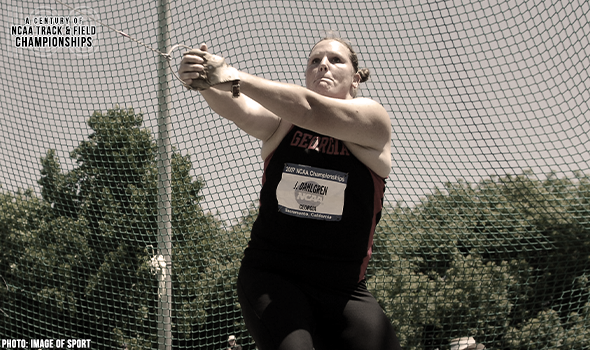
Dahlgren Won Back-To-Back HT Titles, Set MR
Jenny Dahlgren won back-to-back hammer titles at the NCAA DI Outdoor T&F Championships in 2006 & 2007. Dahlgren set a MR of 70.72m (232-0) in that second year.

Peoples Made History One Lap At A Time
Maurice Peoples won the 440-yard dash in 1973 & then really turned up the heat. Peoples split 43.4 on the Sun Devils’ mile relay team that finished third in the final.
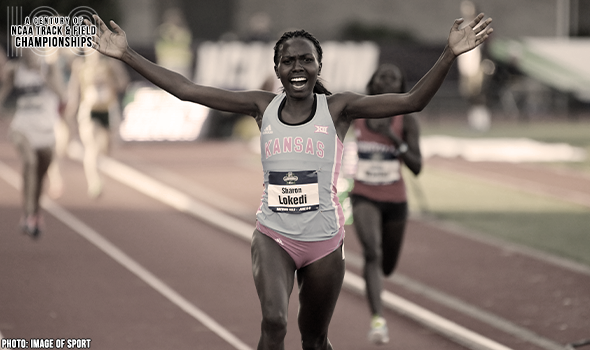
KU’s Lokedi Set 10K MR In 2018
Sharon Lokedi won the 10K at the 2018 NCAA DI Outdoor T&F Championships in a meet-record 32:09.20. Lokedi led five other women under the old final-site best, too.
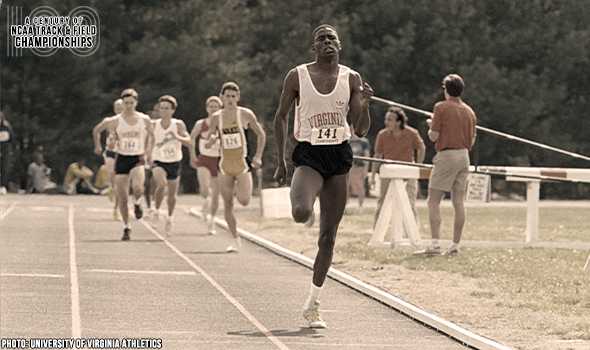
Can Ereng Kick It? Yes, He Can!
Paul Ereng won back-to-back 800-meter titles at the NCAA DI Outdoor T&F Championships in 1988 & 1989. Ereng is still the current indoor record holder in the event.
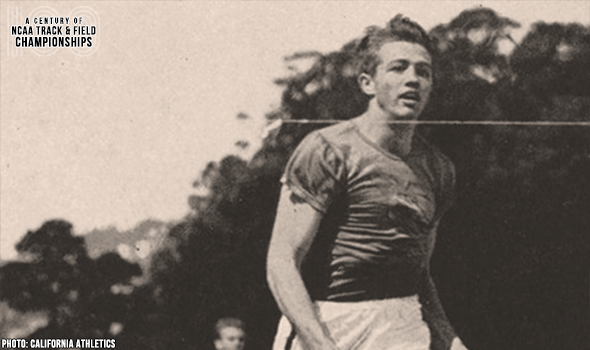
“California Comet” Doubled Up At NCAAs
Hal Davis completed the 100-200 double twice at the NCAA Outdoor Track & Field Championships.
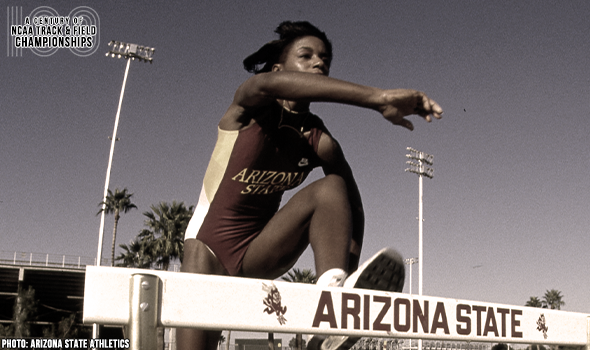
Tolbert Clocked 100H Meet Record In 1988
Lynda Tolbert won two career 100H titles at the NCAA DI Outdoor T&F Championships in 1988 & 1990. When Tolbert won in 1988, she set a MR of 12.82.
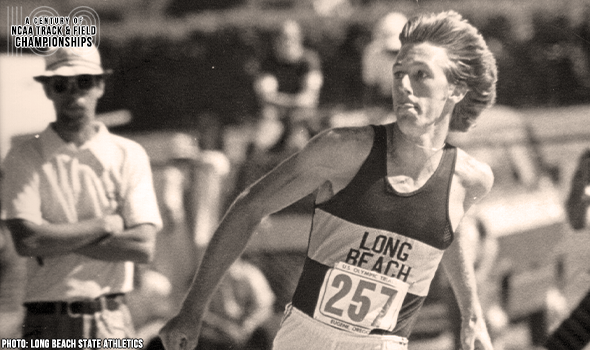
Dwight Stones Set High Jump WR In 1976
Dwight Stones set a world record in the high jump of 2.31m (7-7) at the 1976 NCAA DI Outdoor T&F Championships. Stones also raised the MR by more than 3 inches!
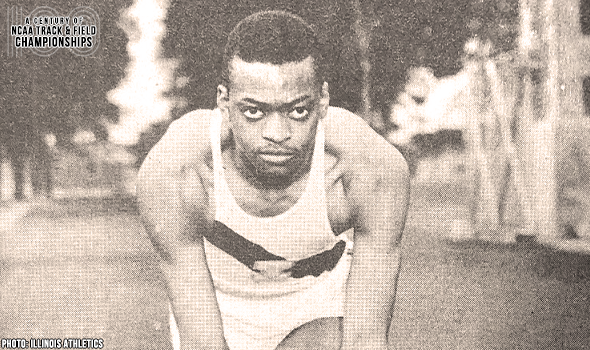
Walker Completed Only Hurdling Triple
George Walker is the only athlete in NCAA Outdoor T&F Championships history to win all three hurdling events: 110H (120H), 400H & now-defunct 220H.

